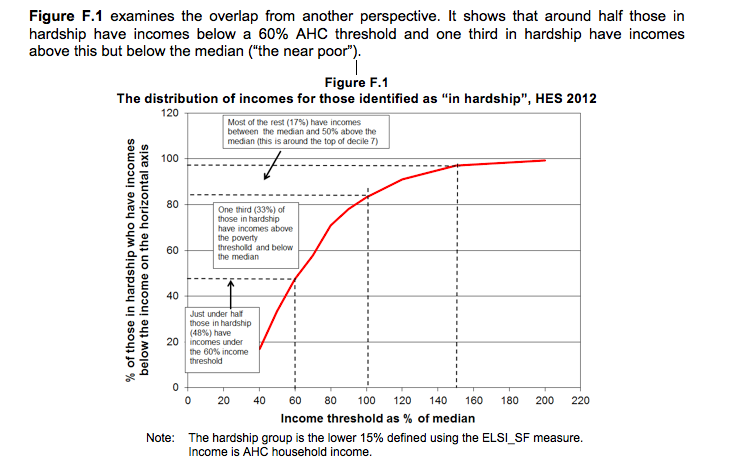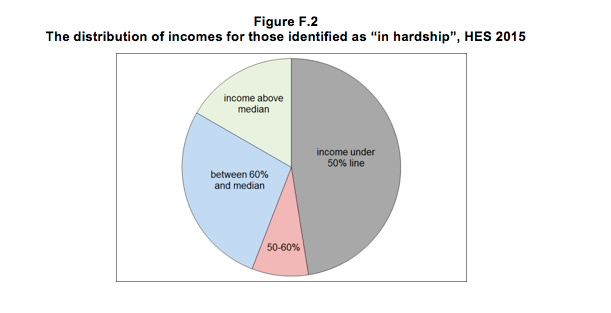Every year the Ministry of Social Development (MSD) using data collected by Statistics New Zealand reports on how New Zealand households are doing economically. We get a raft of data on household income and material wellbeing. Bryan Perry is the unsung hero of this work. Bryan looks like a good keen man, better suited to tramping in the backcountry than diving deep into statistics (and who knows perhaps he escapes to a DOC hut in the Tararua ranges each year after the report is done). His knowledge of poverty measures and data is outstanding.
The group of reports that is produced is not for the faint hearted, but for researchers and policy makers they are a bible of information about how New Zealand is doing. The main value in these reports is not derived so much from the individual year’s figures, but rather the trends that are captured over time.
Many in the last few days have done a great job of explaining the findings reported this year. Max Rashbrook made clear in the Spinoff that the long-term trend is the big issue here. Policy choices made in the 1980s and 90s meant things went badly for many New Zealand households then and we simply have not shifted the dial much since. Notably the better off have continued to do just fine. Newsroom’s Bernard Hickey made the very salient point that housing is a massive issue. Bernard’s piece in particular highlighted the continued findings in the report that expensive poor quality rental accommodation is a blight upon our nation and our children. Most pieces have highlighted just how hard life is for people and families living on the very least in Aotearoa New Zealand. However, there is another story in the report too, that is the story of people who are ‘near poor’.
The invisible people
Yesterday Bruce Munroe wrote an excellent article telling the story of those who are working but not working enough or getting paid enough to ever do anything but tread water. While people in government may claim a large casual flexible workforce as a success for an economy, the reality is it is no success for the people who are living the reality of precarious insecure work. People whose incomes may be just enough to define them as not being in ‘income poverty’ but but using a different measure of wellbeing shows they are far from ok.
The MSD income report comes with a companion called the ‘non-incomes report’. As I (and many others who work in this area) have been at pains to point out simply relying on income measures to assess how people are doing economically is not sufficient, measures of material hardship are needed as well. These are contained in the non-incomes report. I describe these measures in detail in Pennies from Heaven. Briefly, they measure, in different ways, a person’s access to key goods and services, and include the ability to pay a large bill for example.
It is not all about incomes
What the non-incomes measures show is that there is a significant group of people who are not defined as being in income poverty (that is their incomes are just above 60% of the median income) but who are living in material hardship.
In the graph below from the non-incomes report we can see that 33% of people who experience material hardship are not defined as income poor. The findings serve to highlight what we know from other the incomes report – that paid work is not sufficient to ensure people in New Zealand are thriving anymore. Around half of children in material hardship for example have a parent who is in paid employment.
Source: Non-Incomes Report (2017). MSD
The second graph (below) represents the 8% of New Zealanders who live in material hardship (around 375,000 people). To quote the report
“just under half (48%) have incomes below the 50% of median after housing cost [income poverty] line and a further 8% in the 50% to 60% band; 27% have incomes between the 60% line and the median, and a further 17% have incomes above the median.”
The median disposable household income in New Zealand before housing costs is $46,000 per year, after housing costs (AHC) it is $36,000 per year, so 60% of that AHC median is $21,600.
Source: Non-Incomes Report (2017). MSD
Living on the edge is incredibly stressful
For individuals and families trying to get by on an income that is below the median but above the poverty line the reality is that anything can tip them over the edge. Just ask anyone living that reality.
I have explained previously that the pattern of income over a lifetime is not a straight upward trajectory; rather it is like a plate of spaghetti – all over the show. Because life is full of, well, life events – many of these come with either money to be spent or opportunity costs – and such events can tip people over the edge. If supports are insufficient at this point then the chance of getting back out is pretty slim.
People and families existing on a precipice is not “economic success”
Ultimately, what these data, what the economic data show, and importantly what the stories from real people show, is that we have set the bar far too low for success. And in this race for the bottom we are damaging people and damaging the economy (because it is people who make up the economy).
We know from plenty of research that economic stress drives poor outcomes for people, outcomes that prevent people from thriving, and lead to a cycle of misery that both individuals and society will have to pay for. So when a policy goal comprises simply moving people off a welfare payment, or into any type of paid work (regardless of its conditions), the short term gain might be just passable for some people in government. However, the approach is going to come back and bite us on the bum causing some pretty long term pain.
There are many policies that people in government could choose to rectify this situation: we have written much on income support policies, housing policies, tax policies that work to ensure everyone thrives. The evidence is pretty clear, but to get that evidence implemented we need to be clear on what we really value in Aotearoa New Zealand.



